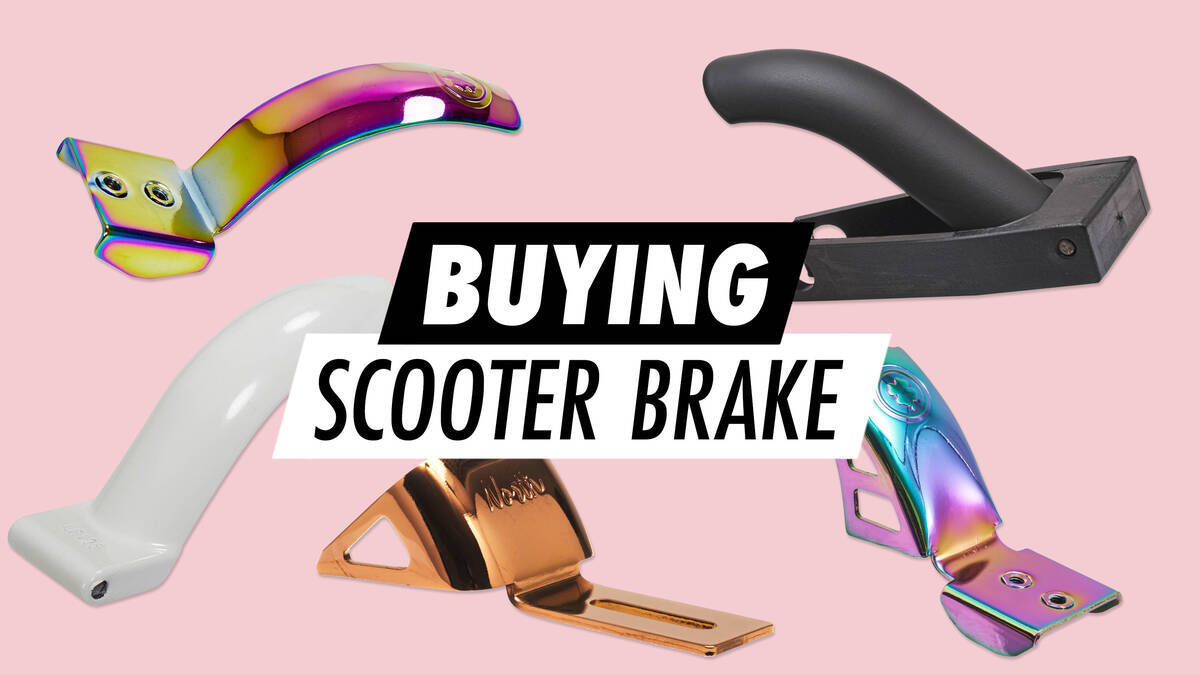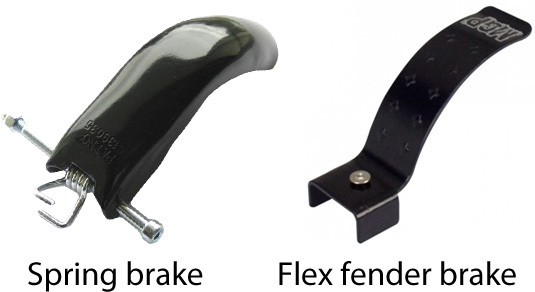Purchasing a Scooter Brake

A brake is crafted to reduce your speed or prevent an accident.
Apply gentle pressure to the brake while shifting your weight backwards on the scooter for the best braking efficiency.
Avoid obstructing the wheel/brake on the scooter, as this will lead to diminished braking effectiveness and cause flatspots on your wheel, irrespective of the brand or quality wheel you use.
Below is a diagram displaying the 2 most commonly utilised brakes.

- A spring brake is affixed on an attached bolt, which then links to the deck. A spring on the bolt ensures the brake points upwards and away from the deck.
- A flex fender brake consists of a lengthy metal plate that is pre-formed to fit around the wheel. It is typically affixed to the deck with one or more screws. Applying pressure on the metal plate causes the entire plate to bend towards the wheel.
Both types of brakes are created for 100 mm and 110 mm wheels; this is normally noted in the product details.
Suggestions:
- Avoid obstructing your brake (To prevent flatspots, as a flatspot causes your wheel to jump)
- Spring brakes consist of numerous components and are often regarded as noisier than flex fender brakes.
- Flex fender brakes generally possess a shorter lifespan due to their design.
- Attaining a completely silent brake consistently over time is not feasible.
- 110 mm wheels are incompatible with 100 mm brakes.
- 100 mm wheels will accommodate and operate under a 110 mm brake.
- Not all brakes are compatible with all decks. (Utilise the same brand and type)
- Flex Fender brakes are prone to snapping easily if a wheel is worn down, since the plate has to cover more distance to reach it. Always replace your wheels before they are fully worn down!
In this video, we exhibit how to install a flex fender brake on your deck:
Return to Assembling a Custom Trick scooter
Return to Stunt Scooters explained
